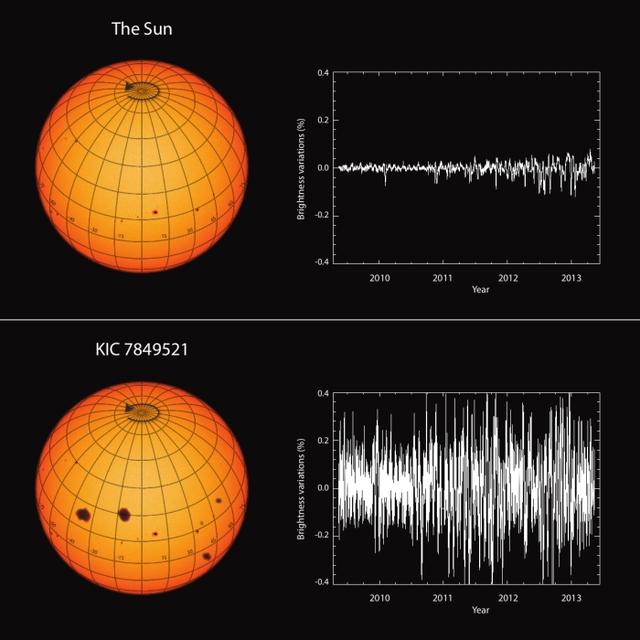Study Suggests Sun Less Active than Similar Stars
A new study suggests the sun appears to experience far fewer changes in brightness and intensity than other stars like it.
Researchers reported last week on their examination of 369 stars. They compared each one to the sun in terms of surface temperature, size and rotation. They found that on average, the other stars had five times more brightness variability than our sun.
A report on the study and its findings was published in Science magazine.
The lead author was Timo Reinhold, an astronomer with the Max Planck Institute for Solar System Research in Germany. He told the Reuters news agency that the variability in brightness results from dark spots on the surface of the star moving in and out of view.
"A direct measure of solar activity is the number of sunspots on the surface," Reinhold said. "Finding such stars with very similar parameters as our sun but being five times more variable was surprising."
The sun — made up mainly of hydrogen and helium — is an average-sized star that formed more than 4.5 billion years ago. It stretches about 1.4 million kilometers across and has a surface temperature of 5,500 degrees Celsius.

The researchers compared scientific data on the similar stars to historical records of the sun's activity. The records included about 400 years of observational data on sunspots. The researchers also studied about 9,000 years of data based on chemical element variants in tree rings and ice buildup tied to solar activity. These records show the sun has not been much more active than it is now.
The researchers said increased magnetic activity related to sunspots can lead to electromagnetic events that affect Earth. For example, large releases of plasma — a collection of charged particles — from outer areas of the sun's atmosphere could cause problems for satellites and other communications equipment. Other electromagnetic activities could also result in such difficulties.
The discovery that the sun does not experience as many changes as other stars may be good news for life on Earth.
A much more active sun might have had more major effects on Earth's geology and ancient climate. "A 'too active' star would definitively change the conditions for life on the planet, so living with a quite boring star is not the worst option," Reinhold said.
The findings, he noted, do not rule out the possibility that the sun may be in a quiet period and could become more variable in the future.
However, the researchers say there are no signs that solar activity will be increasing any time soon.
"For the last decade, the sun has been showing itself to be rather weakly active, even by its own low standards," they said in a statement. "Predictions of activity for the next 11 years indicate that this will not change soon."
I'm Bryan Lynn.











